Welcome to Your Green Thumb Guide, where you will learn everything you need to know about growing plants and cultivating a beautiful garden. Whether you have a green thumb or are just starting out, this comprehensive guide will provide you with the knowledge and tips you need to become a successful plant parent.
Learning how to grow plants is not only a fulfilling hobby, but it also offers a multitude of benefits. From improved air quality to stress relief and the satisfaction of nurturing living beings, growing plants can enhance your physical and mental well-being.
Key Takeaways:
- Discover the importance of learning how to grow plants
- Explore the numerous benefits of growing plants
- Get started with essential plant care practices
- Differentiate between indoor and outdoor gardening techniques
- Learn how to choose the right plants for your garden
- Discover the essential gardening tools every gardener should have
- Master the art of plant propagation and maintenance
- Find solutions to common plant problems
- Get inspired to create a beautiful garden space
- Recap the key points discussed throughout the article
Now, let’s dive into the exciting world of plant care and gardening. From beginner tips to troubleshooting common problems, this guide has got you covered. Get ready to unleash your green thumb and enjoy the journey of growing plants!
The Benefits of Growing Plants
Growing plants offers a multitude of benefits that go beyond just having a beautiful garden. Whether you are an experienced gardener or just starting out, here are some reasons why you should embrace your green thumb:
Improved Air Quality
Plants play a crucial role in improving indoor and outdoor air quality. They release oxygen and absorb carbon dioxide, helping to purify the air we breathe. Research has shown that indoor plants can reduce the levels of indoor air pollutants, such as volatile organic compounds (VOCs), which can be emitted from household items like paints, furniture, and cleaning products. Additionally, plants can help to humidify the air, which is particularly beneficial in dry environments.
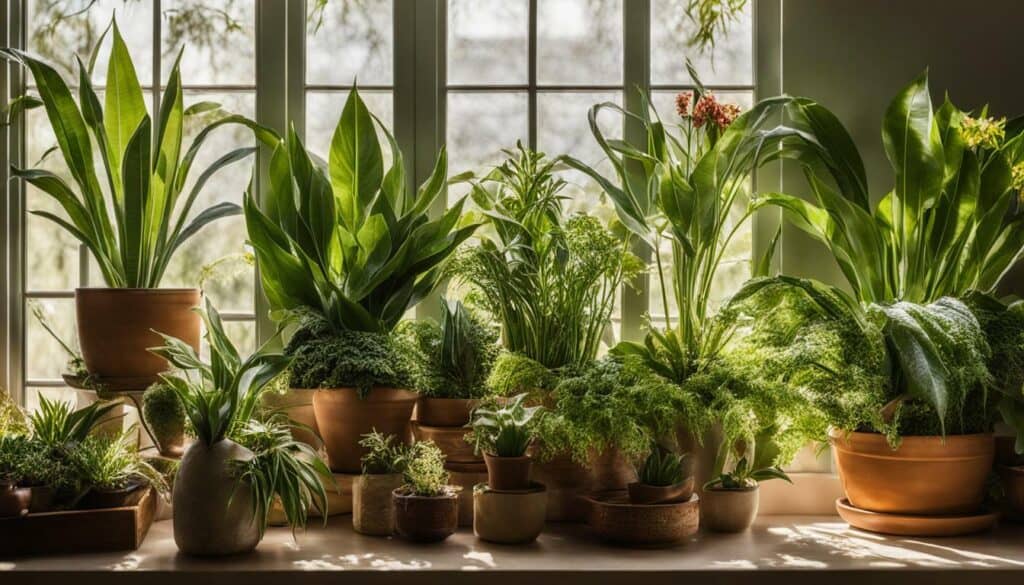
Stress Relief
Spending time with plants and nature has been proven to reduce stress levels and improve overall well-being. Gardening has a therapeutic effect, allowing you to connect with nature and engage in a mindful activity. The act of nurturing and watching plants grow can provide a sense of accomplishment and relaxation. Studies have shown that gardening can reduce symptoms of anxiety and depression, improve mood, and promote a sense of calmness.
Satisfaction of Nurturing Living Beings
Taking care of plants provides a sense of responsibility and can be incredibly rewarding. Watching a seedling grow into a mature plant or seeing flowers bloom can bring a sense of joy and pride. It allows you to create a nurturing environment and witness the beauty of nature firsthand. Gardening can also teach valuable lessons about patience, persistence, and the cycle of life.
By experiencing the benefits of plant growth, practicing plant maintenance, and learning various gardening techniques, you can enjoy the rewards of having a green thumb. So, don’t hesitate to start growing plants and reap the numerous benefits they offer!
Getting Started with Plant Care
As a beginner, it’s important to understand the basics of plant care to ensure your plants thrive. Whether you’re growing plants indoors or outdoors, proper care is essential for their overall health and growth. Here are some gardening techniques and tips to help you get started:
1. Watering
Watering your plants correctly is crucial for their survival. Different plants have different water requirements, so it’s essential to research the specific needs of each plant in your garden. As a general rule, most plants prefer to be watered thoroughly but infrequently. This means you should water the plants until the water drains out of the bottom of the pot or onto the soil, ensuring the roots receive adequate moisture.
However, overwatering can be detrimental to plants, as it can lead to root rot and other issues. Before watering your plants, check the moisture levels of the soil by sticking your finger about an inch into the soil. If it feels dry, it’s time to water, but if it feels moist, wait a bit longer.
Additionally, be mindful of the weather conditions and adjust your watering schedule accordingly. Hot and dry weather may require more frequent watering, while cooler and rainy weather may necessitate less frequent watering.
2. Sunlight
Proper sunlight is essential for the growth and development of plants. Most plants require at least six to eight hours of direct sunlight each day. However, some plants, such as succulents and ferns, thrive in indirect or filtered sunlight.
Pay attention to the sunlight conditions in your garden or the area where you plan to keep your indoor plants. Observe how the sun moves throughout the day and position your plants accordingly. Placing them near windows or in areas with abundant natural light will ensure they receive the necessary sunlight for photosynthesis and healthy growth.
3. Soil and Fertilization
Choosing the right soil for your plants is crucial for their overall health and growth. Different plants have different soil requirements, so it’s essential to select a soil mix that suits their needs. Some plants prefer well-draining soil, while others thrive in moisture-retaining soil.
Fertilization is also essential for providing your plants with the necessary nutrients. Use organic fertilizers or slow-release fertilizers to nourish your plants regularly. Follow the instructions on the fertilizer packaging and avoid over-fertilizing, as it can lead to nutrient imbalances and damage the plants.
4. Pest Control
Pests can pose a significant threat to the health of your plants. Regularly inspect your plants for any signs of pests, such as holes in leaves or visible insects. If you notice an infestation, take immediate action to control it.
There are various methods for pest control, including manual removal, insecticidal soaps, and natural remedies like neem oil or homemade solutions. Research the specific pests affecting your plants and choose the appropriate method to eliminate them.
5. Pruning and Maintenance
Pruning is an essential practice for maintaining the shape and health of your plants. Regularly trim away dead or damaged leaves and branches to promote new growth. Pruning also helps improve air circulation and reduces the risk of fungal diseases.
In addition to pruning, regular maintenance tasks like removing weeds, checking for signs of diseases, and providing support to climbing plants are essential for plant care.
By following these beginner gardening techniques and plant care tips, you’ll be well on your way to cultivating a thriving garden. Remember to research the specific needs of your plants and adjust your care practices accordingly. With time and experience, you’ll develop a green thumb and enjoy the rewards of a beautiful and healthy garden.
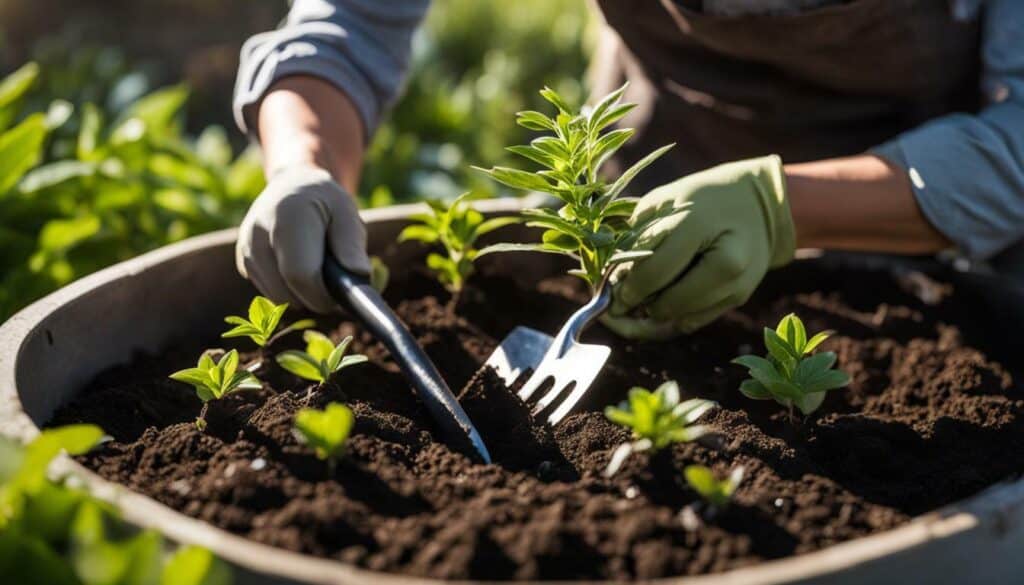
| Watering Tips | Sunlight Tips | Soil and Fertilization Tips |
|---|---|---|
|
|
|
“By following these beginner gardening techniques and plant care tips, you’ll be well on your way to cultivating a thriving garden.”
Indoor vs. Outdoor Gardening
Whether you have a spacious backyard or a small apartment, there are gardening options for everyone. Indoor gardening allows you to bring the beauty of nature into your home, while outdoor gardening allows you to make use of your outdoor space and enjoy the fresh air. Both options have their benefits and considerations, so let’s explore the differences between indoor and outdoor gardening to help you decide which is best for you.
Indoor Gardening
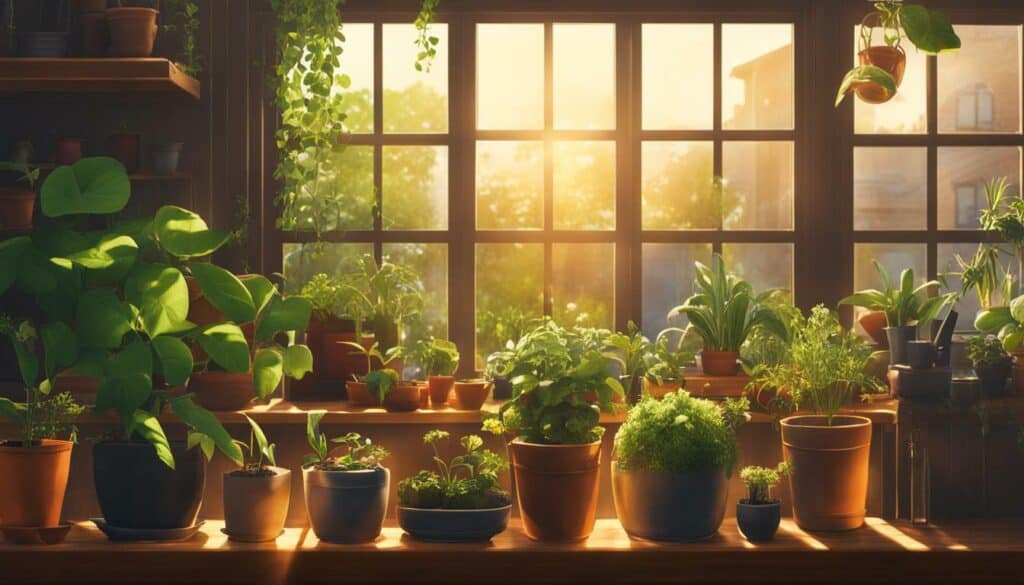
Indoor gardening is a great option for those with limited outdoor space or for those who want to enjoy gardening year-round. It involves growing plants inside your home, typically in pots or containers. Here are some key considerations for indoor gardening:
- Lighting: Indoor plants require adequate lighting to thrive. If you don’t have access to natural sunlight, you can use artificial grow lights to provide the necessary light for your plants.
- Temperature and Humidity: Indoor environments tend to have more stable temperatures and humidity levels, which can be beneficial for certain plants. However, it’s important to choose plants that are suited to the conditions of your home.
- Space: Indoor gardening allows you to grow plants in small spaces, such as on windowsills, shelves, or hanging baskets. You can also get creative with vertical gardening techniques to maximize space.
- Pest Control: Indoor plants are generally less prone to pests and diseases compared to outdoor plants. However, it’s still important to monitor your plants for any signs of pests and take appropriate measures to control them.
Outdoor Gardening
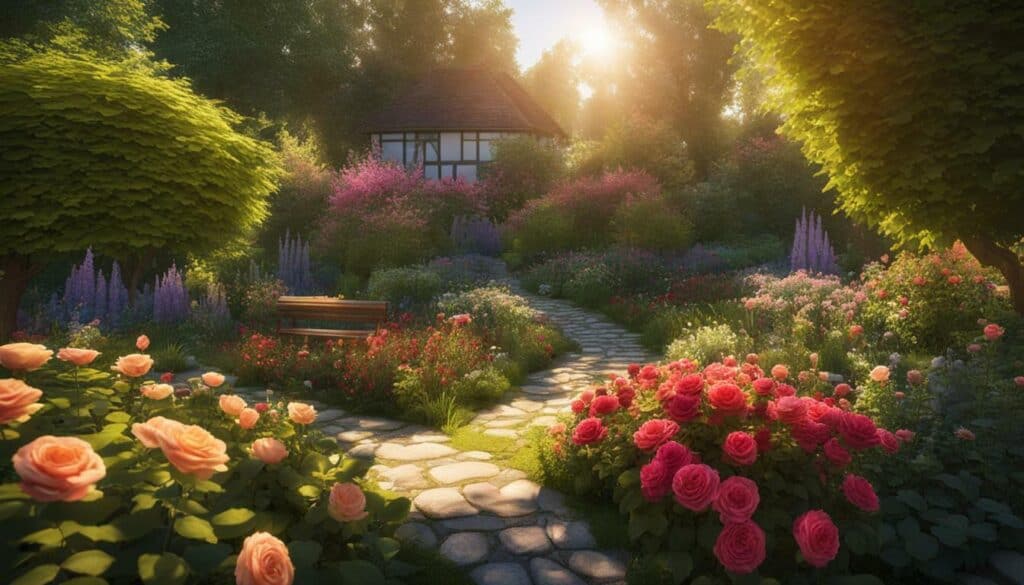
Outdoor gardening is a traditional form of gardening that takes advantage of the natural environment. It allows for a wide variety of plant choices and provides ample space for plants to grow. Consider the following factors for outdoor gardening:
- Sunlight: Outdoor plants rely on natural sunlight for photosynthesis and growth. It’s important to choose plants that are suitable for the amount of sunlight your outdoor space receives.
- Soil and Drainage: Outdoor gardening requires proper soil preparation and drainage to ensure healthy plant growth. Testing and amending your soil as needed will help provide optimal conditions for your plants.
- Weather Conditions: Outdoor plants are exposed to changing weather conditions, including temperature fluctuations, wind, and rainfall. Consider the climate in your area and choose plants that are hardy and can withstand the conditions.
- Plant Selection: Outdoor gardening allows for a greater variety of plants, including flowers, fruits, vegetables, and shrubs. You can create stunning landscapes and enjoy a diverse range of plant species.
Indoor gardening allows you to bring nature indoors and enjoy gardening year-round, while outdoor gardening offers a wider variety of plant options and the benefits of being in nature.
Whether you choose indoor or outdoor gardening, both options offer unique benefits and the opportunity to develop your green thumb. It ultimately depends on your space, preferences, and the plants you wish to grow. Remember to consider factors such as lighting, temperature, space, and plant selection when deciding between indoor and outdoor gardening. Happy gardening!
Section 5: Choosing the Right Plants
The key to successful gardening is choosing plants that are well-suited for your specific environment. Whether you are a beginner gardener or have some experience, selecting the right plants is crucial for their growth and your enjoyment. Here are some factors to consider when choosing plants for your garden:
1. Sunlight Requirements
One of the most important factors to consider is the amount of sunlight your garden receives. Some plants thrive in full sun, while others prefer shady areas. Assess the sunlight conditions in your garden and choose plants that match those requirements. If you have a mix of sun and shade, opt for plants that can tolerate both.
2. Soil Type
The type of soil in your garden can greatly influence plant growth. Some plants prefer well-draining soil, while others thrive in moist or fertile soil. Determine the type of soil in your garden and choose plants that are compatible with it. If your soil is less than ideal, you can improve it by adding organic matter or using raised beds.
3. Climate Compatibility
Consider the climate in your area when selecting plants. Some plants are better suited for warm climates, while others can withstand colder temperatures. Check the hardiness zone of the plants you are interested in and ensure they can survive and thrive in your specific region. This will help prevent disappointment and ensure the longevity of your garden.
4. Maintenance Requirements
Be honest about the amount of time and effort you are willing to dedicate to plant care. Some plants require frequent watering, pruning, and fertilization, while others are low-maintenance. If you have limited time or are a beginner gardener, choose plants that are easy to care for and don’t require constant attention.
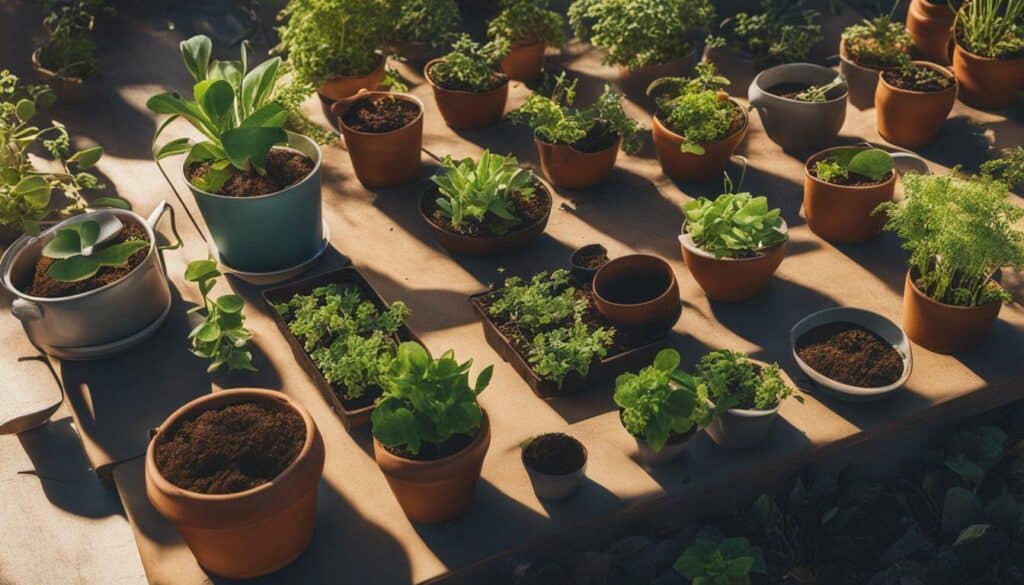
Remember, gardening is a learning process, and it’s okay to experiment and make mistakes. Start with a few plants that you feel confident about and gradually expand your collection as you gain more experience. Visit local nurseries or consult gardening resources for expert advice on plant selection and care.
Essential Gardening Tools
Equipping yourself with the right tools will make gardening tasks easier and more efficient. Whether you’re a beginner or a seasoned gardener, having the essential gardening tools on hand is essential for maintaining and nurturing your plants. Here are some must-have tools that every gardener should consider:
Gloves
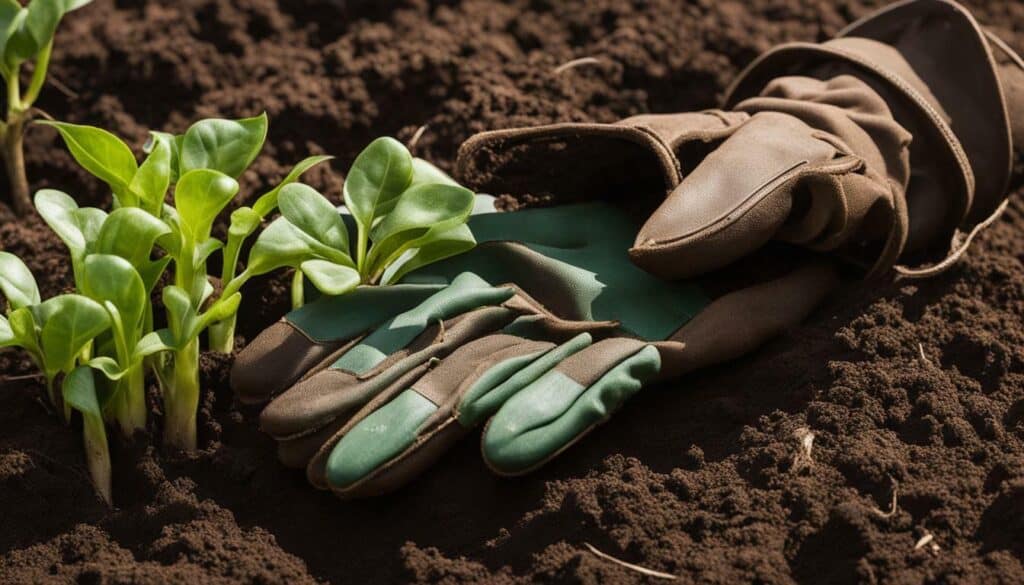
Protecting your hands is crucial when working with plants and soil. Invest in a pair of durable gardening gloves that fit well and provide adequate protection against thorns, prickly plants, and dirt. Gloves will not only keep your hands clean but also prevent any cuts or scratches.
Shears or Pruners
Shears or pruners are essential for trimming plants and managing their growth. Use them to remove dead or damaged branches, shape bushes, and harvest flowers or herbs. Choose a pair that is comfortable to hold and has sharp blades for precise cutting.
Garden Hoe or Rake
A garden hoe or rake is useful for breaking up compacted soil, removing weeds, and smoothing the surface of your garden bed. It helps improve soil drainage and prepares the soil for planting seeds or transplants. Select a tool that is appropriate for the size of your garden and the tasks you need to accomplish.
Garden Fork or Spade
A garden fork or spade is essential for moving and turning soil, especially when preparing new beds or transplanting plants. The fork is ideal for loosening compacted soil, while the spade is useful for digging and moving larger quantities of soil. Look for tools with sturdy handles and sharp, durable blades.
Garden Hose or Watering Can

Watering your plants is a crucial part of plant care, and having a garden hose or watering can makes it easier to provide them with the necessary moisture. A garden hose with an adjustable nozzle allows you to control the water flow, while a watering can is perfect for smaller plants or areas that are not easily reached by a hose. Choose a hose or can with a comfortable grip and a nozzle that suits your watering needs.
Rich Soil
Good quality soil is the foundation for healthy plant growth. Invest in nutrient-rich soil that provides the necessary elements for strong root development and overall plant health. Consider using compost or organic matter to improve the soil structure and enhance its fertility.
Other Helpful Tools
In addition to the essential tools mentioned above, there are other gardening tools that can be beneficial for specific tasks or preferences. Some of these tools include a wheelbarrow or garden cart for transporting heavy materials, a trowel for planting and transplanting small plants, a hand weeder for removing stubborn weeds, and a garden hose reel or storage system for keeping your hoses organized. Choose tools that align with your gardening goals and suit the size and type of your garden.
Having the right tools can make all the difference in the world when it comes to gardening. They not only make tasks easier but also contribute to the overall success of your garden.”
Remember to clean and maintain your tools regularly to ensure their longevity and optimal performance. Proper tool storage and regular sharpening will help keep your gardening tools in excellent condition.
Equipping yourself with the right tools is the first step towards becoming a successful gardener. With the essential tools mentioned above, you’ll be well-prepared to tackle any gardening task and nurture your plants with care and precision.
Plant Propagation and Maintenance
Learning how to propagate plants will not only save you money but also allow you to expand your garden. Propagation is the process of creating new plants from existing ones, and it can be done in various ways, including seeds, cuttings, division, and layering.
Propagation Methods
One of the easiest and most common methods of plant propagation is through stem cuttings. This involves taking a healthy stem or branch from a mature plant and rooting it in water or soil. Choose a branch that is free from diseases or pests and make a clean cut just below a node, which is where the leaves or buds attach to the stem. Remove any lower leaves and place the cutting in a glass of water or a well-draining potting mix. Keep the soil moist or the water level constant until roots start to develop.
Another method of propagation is by dividing plants. This is suitable for plants that naturally form clumps or have rhizomes, such as irises and hostas. Dig up the plant and carefully separate the clumps or rhizomes, ensuring that each division has a good amount of roots attached. Replant the divisions in separate containers or areas of the garden.
Layering is a propagation technique used for plants with flexible branches that can be bent to the ground or into a pot of soil. Dig a small trench near the base of the plant and gently bend a branch into it. Cover the bent portion with soil, leaving the tip exposed. Over time, roots will develop along the buried section. Once the roots are well-established, cut the branch from the parent plant and transplant it to a new location.
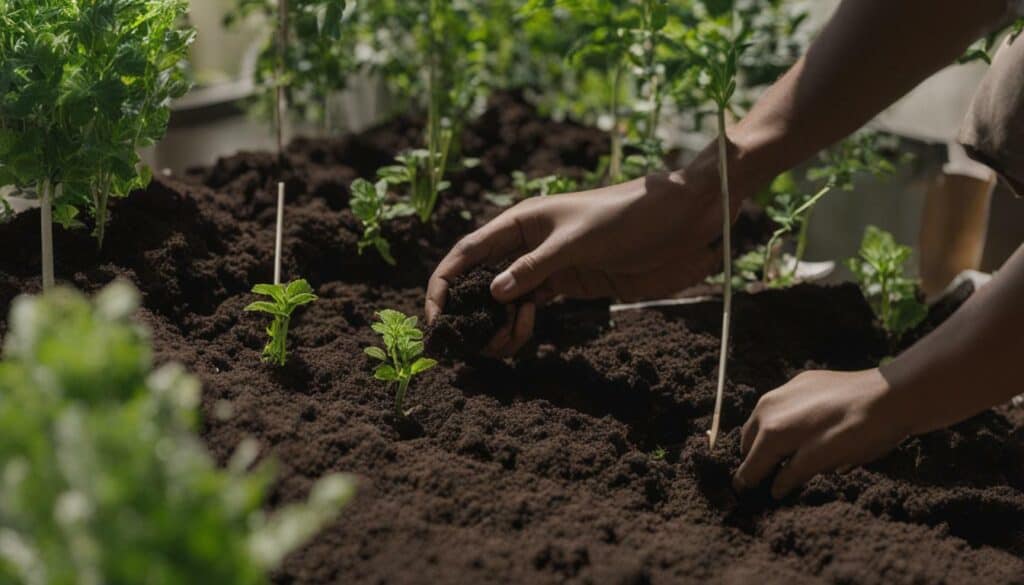
Maintaining Healthy Plants
Proper maintenance is vital for the overall health and growth of your plants. Here are a few tips to ensure your plants thrive:
- Water: Provide your plants with the right amount of water, as over- or under-watering can lead to stress or root rot. Be sure to water at the base of the plant and avoid wetting the foliage.
- Light: Different plants have different light requirements. Some thrive in bright, direct sunlight, while others prefer indirect or low light conditions. Place your plants in locations that meet their specific light needs.
- Fertilization: Feed your plants with a balanced fertilizer to provide them with essential nutrients. Follow the instructions on the fertilizer package and avoid over-fertilizing, as this can harm the plants.
- Pruning: Regularly prune your plants to remove dead or diseased branches, promote airflow, and shape their growth. Pruning also encourages new growth and helps maintain the overall health and appearance of the plant.
- Pest Control: Keep an eye out for pests such as aphids, mealybugs, and spider mites. If you notice any signs of infestation, take immediate action to prevent the pests from spreading and damaging your plants. Use organic pest control methods whenever possible.
“Proper maintenance is vital for the overall health and growth of your plants.”
By propagating your plants and providing them with proper care, you can enjoy a thriving garden and the satisfaction of watching your plants grow and flourish.
Troubleshooting Common Plant Problems
It’s normal to encounter challenges when growing plants, but with proper knowledge, you can overcome them. Identifying and addressing common plant problems is essential for maintaining healthy and thriving plants. Here are some common issues you may come across and how to troubleshoot them.
Pest Infestations
Pests can wreak havoc on your plants, causing damage and inhibiting their growth. Common garden pests include aphids, mealybugs, spider mites, and snails. To combat these pests, you can:
- Inspect your plants regularly: Look for signs of pest infestation such as yellowing leaves, distorted growth, or small insects on the leaves or stems.
- Remove pests manually: If you spot any pests, you can remove them manually by using tweezers or a soft cloth. For larger pests like snails, handpick them and dispose of them away from your garden.
- Use organic pest control methods: There are various organic and natural pest control methods available, such as neem oil, insecticidal soaps, or homemade garlic or chili pepper sprays. Follow the instructions on the product label for safe and effective use.
- Encourage natural predators: Introduce beneficial insects like ladybugs or lacewings to your garden. These predatory insects feed on pests and can help keep their population in check.
Diseases
Plant diseases can be caused by fungi, bacteria, or viruses. They can result in wilting, yellowing leaves, and overall poor plant health. Here’s how you can tackle common plant diseases:
- Practice good sanitation: Remove any infected plant materials, including leaves, stems, or fruits, and dispose of them properly. This will help prevent the spread of diseases.
- Avoid overhead watering: Water your plants at the soil level to minimize moisture on the leaves, as this can create a favorable environment for diseases to thrive.
- Apply appropriate fungicides: If your plants are affected by fungal diseases, such as powdery mildew or leaf spot, you can apply fungicides to control the spread. Choose a product labeled for the specific disease and follow the instructions carefully.
- Ensure proper air circulation: Good air circulation reduces humidity and prevents the buildup of moisture, which can create a breeding ground for diseases. Avoid overcrowding plants and trim back any dense foliage.
Nutrient Deficiencies
Plants require essential nutrients for healthy growth. Nutrient deficiencies can manifest as discoloration, stunted growth, or poor flowering. Here’s how to address nutrient deficiencies:
- Test your soil: Conduct a soil test to determine the nutrient levels and pH of your soil. This will help you identify any deficiencies and adjust your fertilization accordingly.
- Choose the right fertilizer: Select a fertilizer formula that addresses the specific nutrient deficiencies in your soil. Follow the recommended application rates and timing for optimal results.
- Consider organic amendments: Organic matter, such as compost or well-rotted manure, can improve soil fertility and provide a slow release of nutrients to your plants.
- Monitor plant symptoms: Pay attention to the symptoms exhibited by your plants and research common nutrient deficiencies to identify the specific nutrient they may be lacking.
Remember, prevention is always better than cure. Regularly monitor your plants, provide appropriate care, and create a favorable environment to minimize the chances of encountering these common plant problems.
By understanding the common challenges and knowing how to troubleshoot them, you can ensure that your plants thrive and flourish in your garden. Happy gardening!

Designing Your Garden Space: Creating a Tranquil Oasis
Designing your garden space is an opportunity to showcase your creativity and create a tranquil oasis. Whether you have a small balcony, a backyard, or a sprawling garden, with the right planning and design, you can transform it into a beautiful and peaceful sanctuary. Here are some gardening tips and plant care ideas to help you design a stunning garden space.
1. Choose the Right Color Scheme: When designing your garden, think about the overall color scheme you want to achieve. Consider the colors of the plants, flowers, and other elements in your space. Create a harmonious balance by choosing complementary colors or a monochromatic palette.
2. Create Beautiful Plant Combinations: Select plants that not only complement each other in terms of color but also in terms of height, texture, and form. Consider using varying heights and layering plants to create depth and visual interest in your garden. Group plants with similar care requirements together to make maintenance easier.
3. Incorporate Landscape Features: Add focal points or landscape features to enhance the beauty of your garden. This could be a water feature, a garden sculpture, or a decorative pathway. These features can add a sense of tranquility and serve as conversation starters.
4. Pay Attention to Lighting: Lighting plays a crucial role in garden design. Consider both natural and artificial lighting. If your garden gets plenty of sunlight, choose plants that thrive in full sun. Incorporate outdoor lighting to create a magical ambiance during evenings.
5. Add Hardscaping Elements: Integrate hardscaping elements like patios, decks, or pergolas into your garden design. These structures can provide shade, seating areas, and outdoor living spaces where you can relax and enjoy your garden.
6. Use Containers for Versatility: Containers offer flexibility in garden design, especially if you have limited space. Plant flowers, herbs, or even small trees in decorative pots or hanging baskets. This allows you to move and rearrange your plants as needed.
7. Consider Native Plants: Incorporating native plants into your garden not only supports local ecosystems but also makes maintenance easier. Native plants are adapted to the local climate and require less water and care.
8. Utilize Vertical Space: Make use of vertical space by growing climbing plants or installing trellises. This maximizes your planting area and adds a vertical dimension to your garden design.
9. Embrace Sustainability: Design your garden space with sustainability in mind. Use organic fertilizers, collect rainwater for watering plants, and consider using recycled materials for your garden structures.
10. Create a Relaxation Area: Dedicate a cozy corner of your garden as a relaxation area. Add comfortable seating, cushions, and perhaps a small table. This space will be your sanctuary where you can unwind and enjoy the beauty of your garden.
Designing your garden space is an exciting and creative process. Whether you have a green thumb or are just starting out, these gardening tips and plant care ideas will help you create a stunning and tranquil oasis that you can enjoy for years to come.

Inspiring Quotes:
“The glory of gardening: hands in the dirt, head in the sun, heart with nature. To nurture a garden is to feed not just the body, but the soul.” – Alfred Austin
“A garden is a grand teacher. It teaches patience and careful watchfulness; it teaches industry and thrift; above all, it teaches entire trust.” – Gertrude Jekyll
Essential Gardening Tools:
| Tool | Description |
|---|---|
| Gloves | To protect your hands from thorns and dirt. |
| Pruning Shears | For trimming plants and removing dead or damaged branches. |
| Trowel | For digging small holes and planting seedlings. |
| Watering Can | For watering your plants with precision. |
| Garden Fork | To loosen and aerate the soil. |
Gardening Tips for Beginners:
- Start with easy-to-grow plants that require minimal care.
- Don’t be afraid to experiment and learn from your mistakes.
- Observe your garden regularly and make adjustments as needed.
- Stay consistent with watering and maintenance routines.
- Join local gardening communities or seek advice from experienced gardeners.
Congratulations! You now have the knowledge and confidence to embark on your plant-growing journey.
Throughout this article, we have covered a range of gardening techniques and plant care tips to help you develop your green thumb and create a thriving garden. By learning how to grow plants, you can experience the many benefits of gardening and enjoy the satisfaction of nurturing living beings.
The Benefits of Growing Plants
Growing plants not only adds beauty to your surroundings but also offers numerous benefits. It helps improve air quality by absorbing carbon dioxide and releasing oxygen. Gardening can also be a great stress relief, allowing you to connect with nature and find peace in the process of tending to your plants. Furthermore, the act of nurturing plants and watching them grow can bring a sense of fulfillment and accomplishment.
Getting Started with Plant Care
As a beginner gardener, it is important to familiarize yourself with essential plant care practices. Pay attention to watering your plants, providing them with adequate sunlight, and using fertilizers to promote growth. By understanding the basic needs of different plants, you can ensure their well-being and create an environment that fosters healthy growth.
Indoor vs. Outdoor Gardening
There are slight differences between indoor and outdoor gardening that you should be aware of. Indoor plants require proper lighting and temperature control, while outdoor plants need to adapt to the natural elements. By understanding the specific needs of each environment, you can successfully cultivate a variety of plants in both settings.
Choosing the Right Plants
Selecting the right plants for your garden is crucial for their success. Consider factors such as the amount of sunlight your garden receives, the type of soil you have, and the climate in your area. By choosing plants that are compatible with your garden’s conditions, you can ensure their long-term growth and health.
Essential Gardening Tools
To effectively care for your plants, it is important to have the right tools on hand. From gloves to shears and watering cans, each tool serves a specific purpose in maintaining a healthy garden. By investing in these essential gardening tools, you can make your gardening experience more enjoyable and efficient.
Plant Propagation and Maintenance
Propagation is the process of creating new plants from existing ones, allowing you to expand your garden and share plants with others. Additionally, proper maintenance is crucial for keeping your plants healthy. Regular pruning, fertilizing, and pest control are essential practices for maintaining a thriving garden.
Troubleshooting Common Plant Problems
While caring for your plants, you may encounter common problems such as pest infestations, diseases, or nutrient deficiencies. It is important to address these issues promptly to prevent further damage to your plants. By learning how to identify and treat common plant problems, you can ensure the longevity and well-being of your garden.
Creating a Beautiful Garden Space
Designing and arranging your garden space is an opportunity to showcase your creativity and create a visually appealing environment. Consider color schemes, plant combinations, and incorporate landscape features to create a garden that reflects your personal style. By paying attention to aesthetics, you can create a space that brings joy and tranquility.
Recap and Final Thoughts
In conclusion, learning how to grow plants and care for them is a rewarding journey. By following the gardening techniques and plant care tips discussed in this article, you can create a thriving garden and enjoy the beauty of nature. So, embrace your green thumb, experiment with different plants, and savor the joy of watching your garden flourish.
FAQ
Q: What are the benefits of growing plants?
A: Growing plants can improve air quality, provide stress relief, and offer the satisfaction of nurturing living beings.
Q: What are some essential plant care practices for beginners?
A: Beginners should focus on watering their plants properly, providing adequate sunlight, and using fertilizers when necessary.
Q: What are the differences between indoor and outdoor gardening?
A: Indoor gardening requires more attention to lighting and temperature, while outdoor gardening relies on natural sunlight and climate conditions.
Q: How do I choose the right plants for my garden?
A: Consider factors such as sunlight, soil type, and climate when selecting plants for your garden.
Q: What are the essential gardening tools I should have?
A: Essential gardening tools include gloves, shears, watering cans, and more.
Q: How do I propagate plants and maintain their health?
A: Plant propagation can be done through various methods, and maintaining plant health requires regular watering, pruning, and fertilizing.
Q: What are some common plant problems and how do I troubleshoot them?
A: Common plant problems include pest infestations, diseases, and nutrient deficiencies. Specific troubleshooting methods depend on the issue.
Q: How can I create a beautiful garden space?
A: Designing a visually appealing garden involves considering color schemes, plant combinations, and incorporating landscape features.
Q: What are some final thoughts on learning to grow plants?
A: Embrace your green thumb, enjoy the process of growing plants, and don’t be afraid to experiment and learn from your experiences.
What Are the Benefits of Using Shaklee Basic H Garden for Growing Plants?
Are you looking for a natural and effective way to grow plants? Look no further! Try shaklee basic h garden today! This incredible product offers numerous benefits, including improved plant growth, increased yield, and protection against pests and diseases. Not to mention, it is eco-friendly and safe for your plants and the environment. Give your garden the boost it needs with Shaklee Basic H Garden.

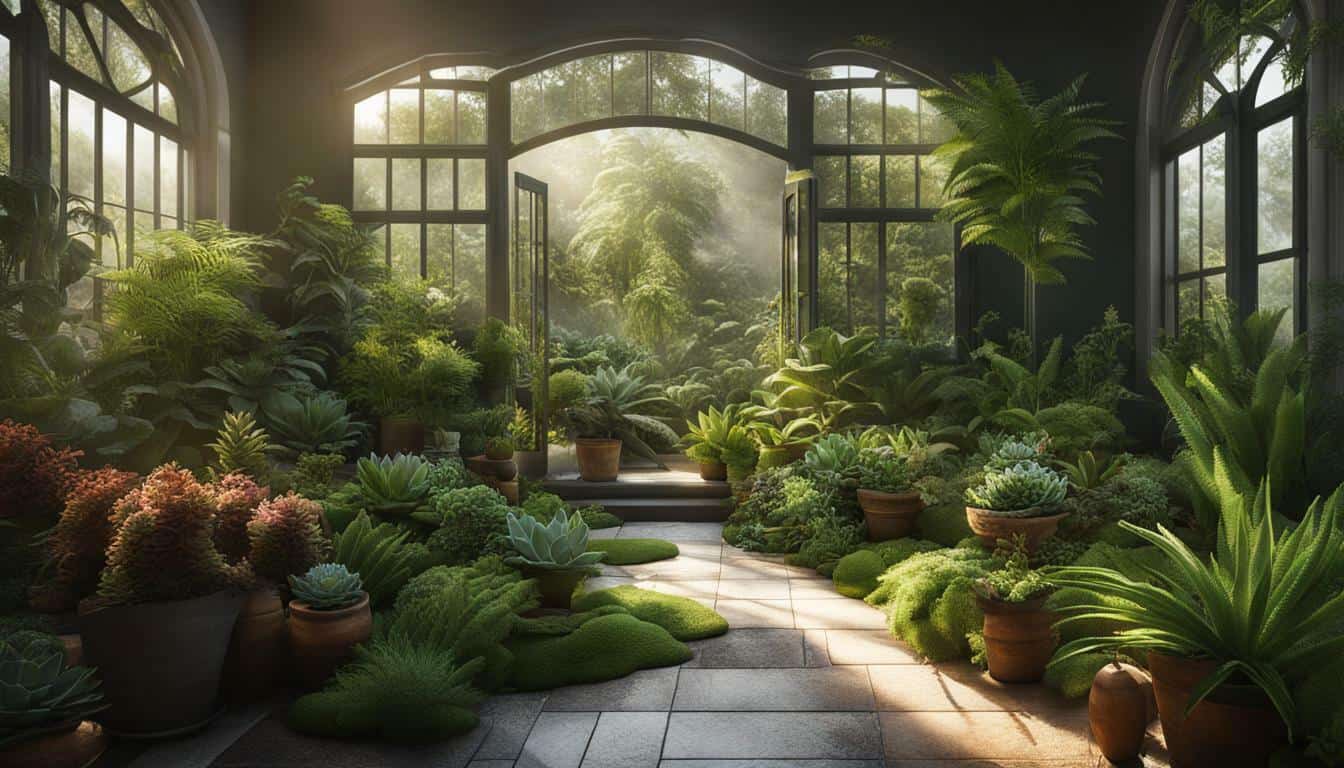



Leave a Reply